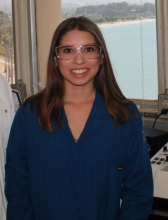
Major:
Mentor(s):
Faculty Sponsor(s):
Faculty Sponsor's Department(s):
Project Title:
Project Description:
Retinal photoreceptor degeneration is a common cause of vision impairment in inheritable eye diseases, such as retinitis pigmentosa (RP). In our previous studies, we discovered human retinal progenitor cells (hRPC), a specialized stem cell type, to possess protective qualities over photoreceptors when injected into the vitreous of the Royal College of Surgeons (RCS) rat, an animal model of inherited retinal degeneration. Concomitant with photoreceptor cell death, the immune cells become activated and migrate to the region of dying photoreceptors. In addition, the glial cells, Müller cells and astrocytes, become highly reactive, changing their morphology as they hypertrophy in response to retinal degeneration. For that reason we have begun to explore the effects hRPCs have on these retinal cell types. Immunohistochemistry was used to analyze retinas from control and treated RCS rats, and control animals without retinal degeneration. Specifically, we used antibodies to glutamine synthetase (GS) and glial fibrillary acidic protein (GFAP), proteins found in glial cells, and the isolectin B4 that identifies immune cells. Images of the retinal tissue were captured using a laser scanning confocal microscope. We found that hRPCs 1) slowed the reactive changes that normally occur in astrocytes, 2) retained a more normal labeling pattern of GS in Müller cells, and 3) reduced the activation of immune cells. These results indicate that hRPCs have beneficial effects on several different cell types in the retina, and advance our understanding of possible mechanisms through which these progenitor cells elicit their protective properties.
